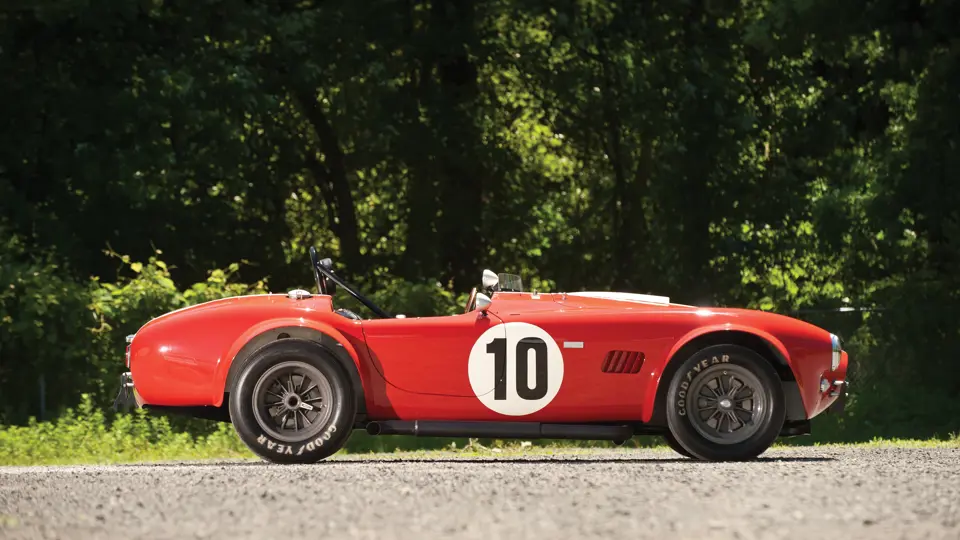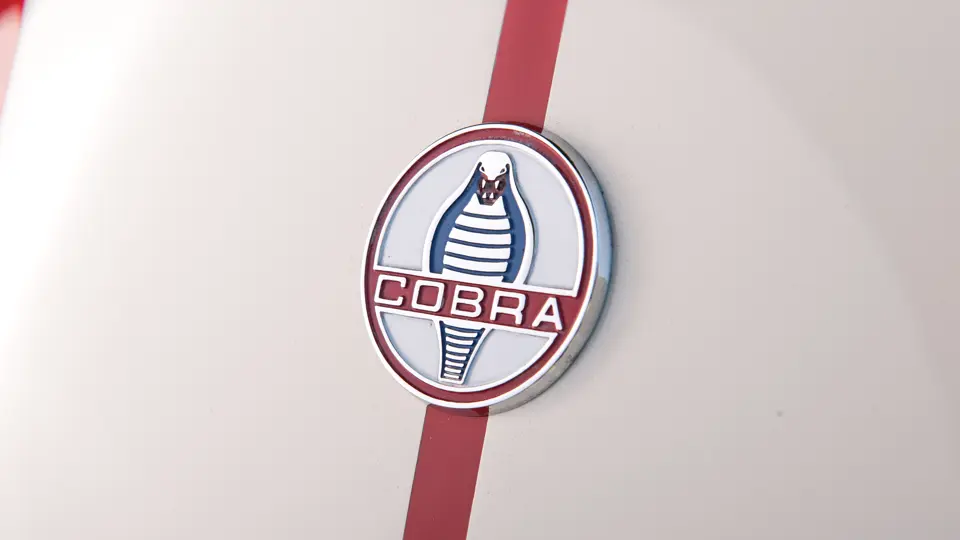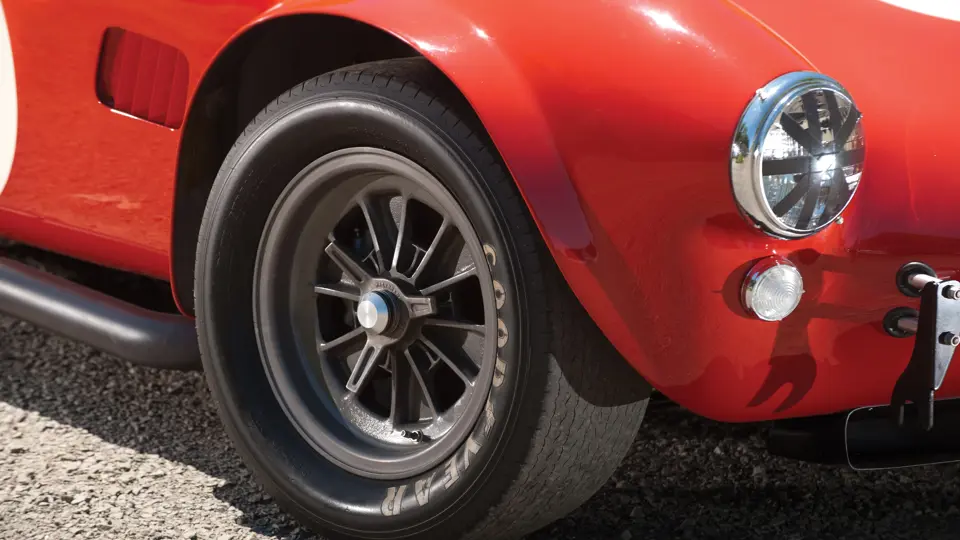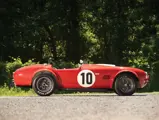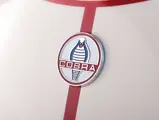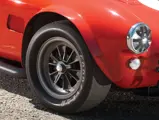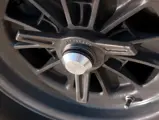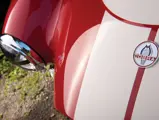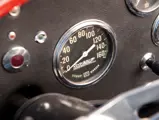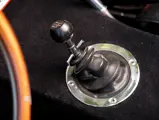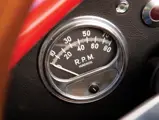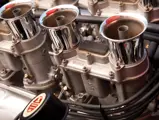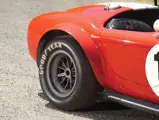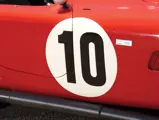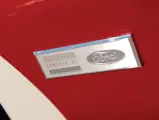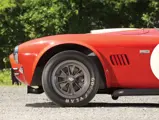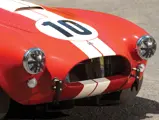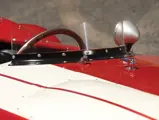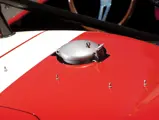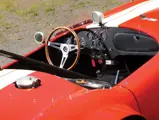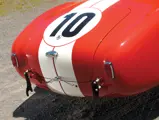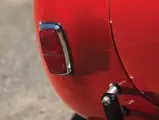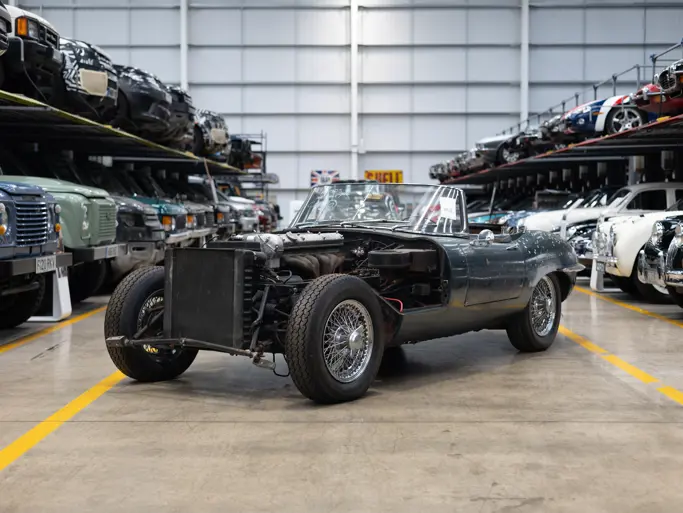Race-prepped, FIA-legal, 289 cu. in. Ford V-8 racing engine, four Weber twin-choke carburetors, four-speed manual transmission, four-wheel independent suspension with A-arms, transverse leaf springs and tubular shock absorbers, and four-wheel hydraulic disc brakes. Wheelbase: 90"
• Early 289 Cobra upgraded for racing by Shelby American in 1964
• Extensive privateer racing history and highly documented provenance
• Driven by Chuck Parsons for J. Randy Hilton in 1964 and by Monte Shelton in 1965
• Completely restored from 1988–1991; presented in 1964 racing livery and specs
• Eligible for today’s most prestigious and desirable vintage-racing events
The history of Anglo-American hybrid sports cars dates back to the launch of Ford’s original “flathead” V-8 of 1932, which provided an infusion of relatively inexpensive and readily upgraded power to the elegant British sportsters of the era. Famous marques with this configuration being built between the wars included Jensen, Brough Superior, Railton, Batten, and others. Following World War II, Sydney Allard advanced the concept even further, and his various models proved devastatingly effective wherever they raced.
But Carroll Shelby’s 1962 Cobra roadster marks the pinnacle of the concept. Simply put, his extensive racing experience taught him what worked and what didn’t. It was also the result of near-perfect timing. Shelby, at 37, was winding down a very successful racing career, which had peaked in 1959, when he won the 24 Hours of Le Mans race for Aston Martin. Shelby became the Goodyear Racing tire distributor for the western USA in 1961 and started his own racing school at Riverside Raceway in California. All he needed now was a car bearing his name.
Shelby considered putting a V-8 engine into the Austin-Healey 3000, but Donald Healey was doing fine with his BMC factory deal and was not interested. Shelby’s Scaglietti Corvette project of 1959 begat three cars, but Chevrolet was loathe to support a Corvette challenger and Scaglietti was not willing to anger its main client, Ferrari. However, AC Cars, of Thames Ditton in Surrey, was more amenable. The company’s John Tojeiro-designed Ace roadster had been a force to reckon with in British sports car racing for six years, but the hottest motor, a prewar BMW two-liter, six-cylinder, was ceasing production.
Bristol Cars had been making the engine under license, but their “Gentleman’s Express” coupes had been getting bigger and bigger, and the engine had been stretched to its limit. Bristol decided to do away with the old six and use a 331-cubic inch Chrysler V-8, which meant that AC needed a new motor. The Hurlock brothers, who owned AC, had been working with tuner Ken Rudd, who was generating as much as 170 horsepower from the 2.6-liter English Ford Zephyr OHV six-cylinder. But the higher horsepower showed up the weakness of the engine’s bottom end, leading to “light bulb” motors, which burned brightly but not for long.
Shelby considered using a small-block Chevrolet V-8, but GM was very protective of its Corvette franchise and didn’t want to subsidize any competition. Instead, Ray Brock told Shelby about a new, lightweight Ford V-8 engine. Displacing 221-cubic inches, its thin-wall construction meant it weighed little more than the outgoing Bristol, and when Ford engineer Dave Evans offered Shelby a couple of 260-cubic inch high-performance variants, designed for the Falcon Sprint, the die was cast—literally. Shelby flew to England on February 1, 1962 to test drive his new Cobra.
As the new cars were completed in Shelby’s California factory, many headed straight to the race track. The first 75 cars were powered by the 260-cubic inch motor, which was quickly enlarged to 289-cubic inches. In racing tune, it delivered up to 385 hp in a car weighing just 2,000 pounds—some 500 less than the Corvettes. The Cobras gave GM fits, starting with Dave MacDonald’s first victory at Riverside a year later on February 2, 1963. There, MacDonald smoked a field of Corvettes, Jaguars, Porsches, and Maseratis, and soon thereafter, every red-blooded sports car aficionado in the USA wanted to possess a Shelby Cobra.
Among those buyers was J. Randy Hilton, of Carmel, California, who was an active privateer racing-team owner in America’s top-level SCCA racing classes during the 1960s. According to the Shelby American World Registry, the Cobra offered here, CSX2290, was originally built as a “street” 289 Cobra and equipped with the Class “A” option package, including white sidewall tires, a luggage rack, five chrome wheels, and antifreeze. It was billed to Shelby American on January 24, 1963, and on February 5, it was shipped to Los Angeles, California on the SS Diemerdyk. While Mr. Hilton purchased the Cobra via Monterey, California’s Leslie Motors, he elected to pick it up directly from the Shelby American facilities at Riverside instead.
Soon after buying CSX2290, Mr. Hilton returned the Cobra to Shelby American for conversion into an all-out SCCA A-Production racing car. Once completed, the Cobra was re-invoiced to Mr. Hilton on June 4, 1964 for an additional $5,478.47 over the original cost of the car. Included in this conversion was a 289 Cobra racing engine, numbered D 103, a complete 4.09:1 differential assembly, 6.5-inch front and 8.5-inch rear FIA-type Halibrand six-spoke wheels, two front and two rear sway bars, a small racing windscreen, and four sets of front and rear brake pads. Finished in red with white racing stripes, the Cobra was further modified with rounded front and rear fender flares, brake-cooling scoops, a hood scoop, a roll bar, and side-exit exhaust pipes. Listed in the latest Shelby American Registry as a “full specification competition model,” CSX2290 is one of only 12 factory-prepared Cobras that were shipped to independent racers outside of the factory team.
As modified, CSX2290 was driven in SCCA A-Production races during the 1964 season by fast-rising sports-car ace Charlie “Chuck” Parsons, whose prolific 14-year racing career included 19 outright wins, 8 class victories and 31 second- and third-place podium finishes over 160 starts. His success in the 1964 season earned him an invite to the ARRC Run-Offs. Results from his 1964 season with the Cobra follow:
June 1964 2nd, Willow Springs, CA – SCCA Regional
July 1964 DNF, Greenwood, IA – USRRC
July 1964 1st, Cotati, CA – SCCA Regional
Aug 1964 3rd, Kent, WA – SCCA Divisional
Sept 1964 8th OA and 4th GT III, Bridgehampton, NY – FIA “Double 500”
Nov 1964 DNF, Riverside, CA – ARRC Run-Offs
In March 1965, CSX2290 was sold to Monte Shelton, who experienced multiple competitive events, including a stellar A-Production Class victory and First Overall at the Portland, Oregon SCCA Nationals in August 1965. In September and November, a third-place podium and a first in A-Production were earned, respectively, at the Vaca Valley SCCA national events. After the 1965 racing season, the Cobra was advertised for sale and subsequently purchased by David Phelan, who raced the car through 1966 and also earned an invite to the ARRC Run-Offs. California’s Dan Harper acquired the car after it had been repainted Guardsman Blue, and three more owners followed until February 1988, when the next owner, Chicago’s Tom Snelback, bought CSX 2290 and commissioned a restoration by Baurle’s Autosport, which was completed in 1991. During the process, CSX2290 was returned to its circa 1964 livery and specifications, as it was raced by Chuck Parsons for Randy Hilton.
In August 1997, the Cobra was displayed at the Shelby Reunion during the Monterey Historics, and it was featured in print in the December 1997 edition of Motor Trend. In 2001, CSX2290 joined the collection of A. Ross Meyers, of Worcester, Pennsylvania, who competed with it in the 2003 Monterey Historics and showed it in 2005 at New York’s Saratoga Automobile Museum, where it formed part of the “Ford Connection” display. It was also depicted in The Shelby American (Number 74, page 57). Two subsequent owners were followed by the current owner, who has used CSX2290 to good effect in many historic racing events.
A well-known 289 Cobra with excellent history, including much early racing success, CSX2290 is also pictured on page 90 in the book Shelby Cobra by Dave Friedman, the noted photojournalist who was also Shelby American’s official photographer in period. Fittingly, it is powered by an FIA-legal racing engine with period-correct induction via four twin-choke Weber carburetors and is eligible for entry into the finest vintage-racing events today, including HMSA events, the Le Mans Classic, the Goodwood Revival Meeting, and many more. Strikingly and authentically presented and blessed with its unblemished provenance, it continues to exemplify Carroll Shelby’s landmark original Cobra series. As such, it will continue to provide racing excitement and, of course, “blue-chip collectible” status for its next caretaker.


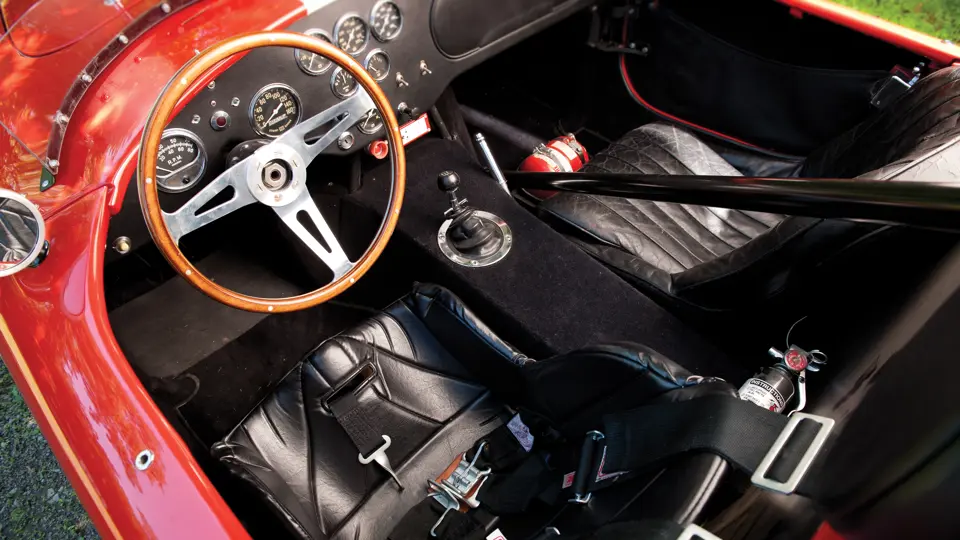

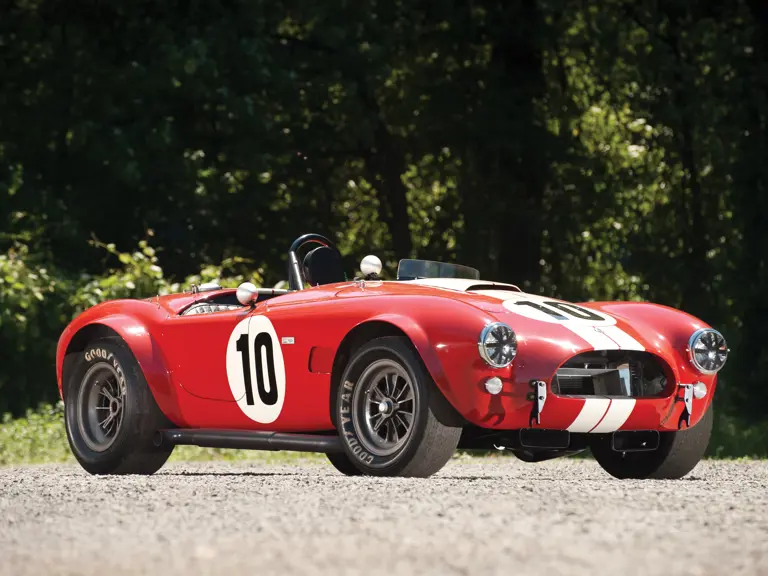
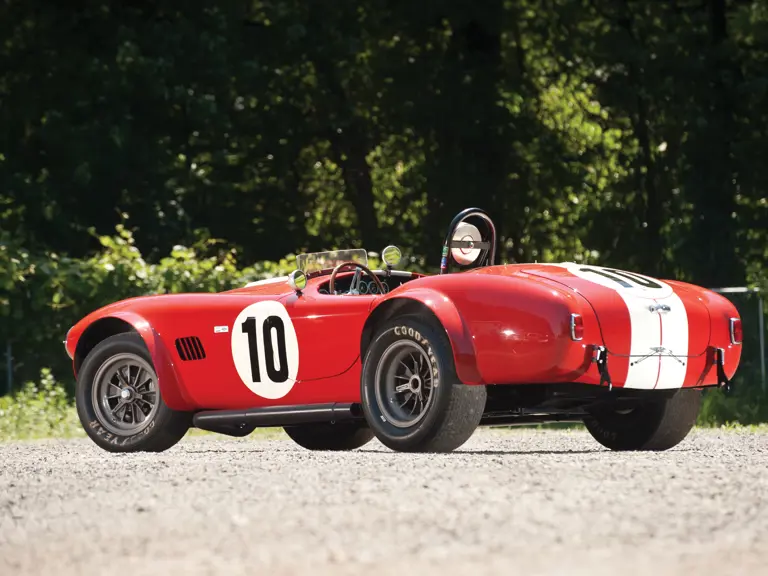
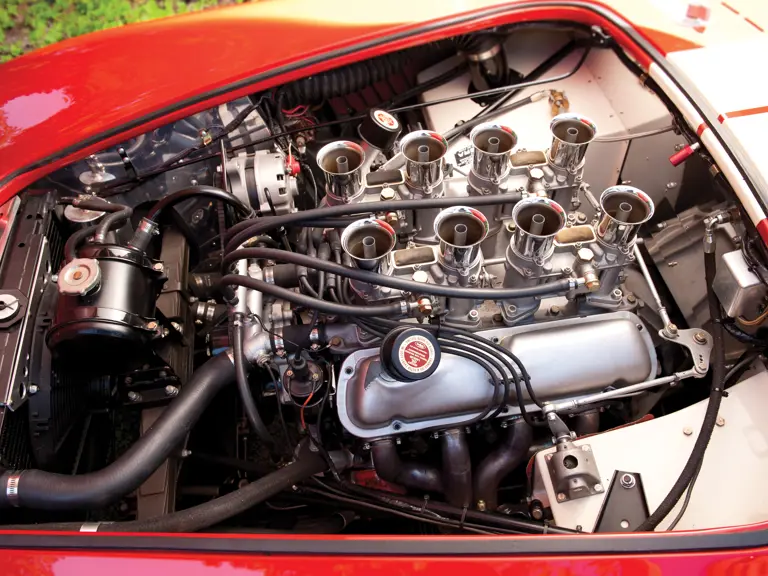
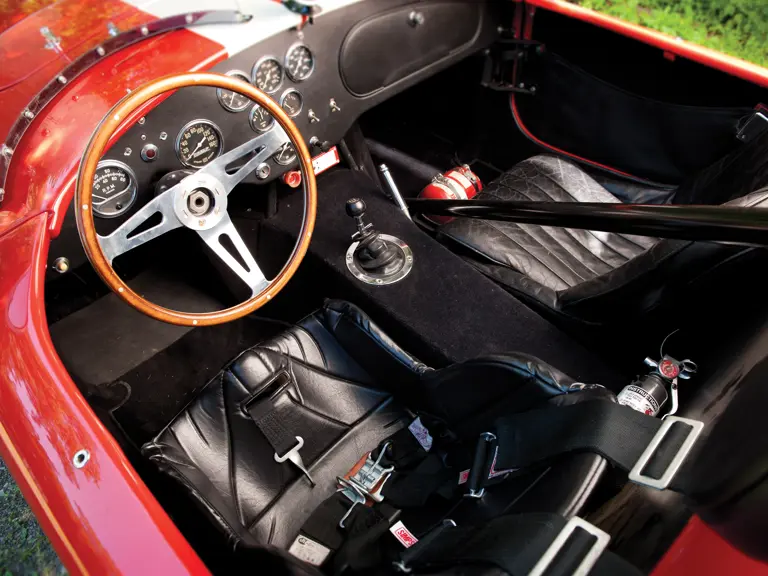
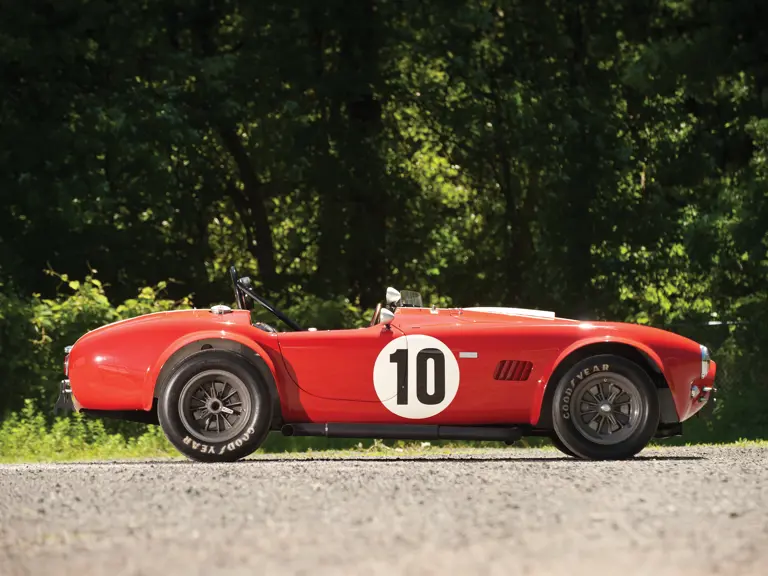
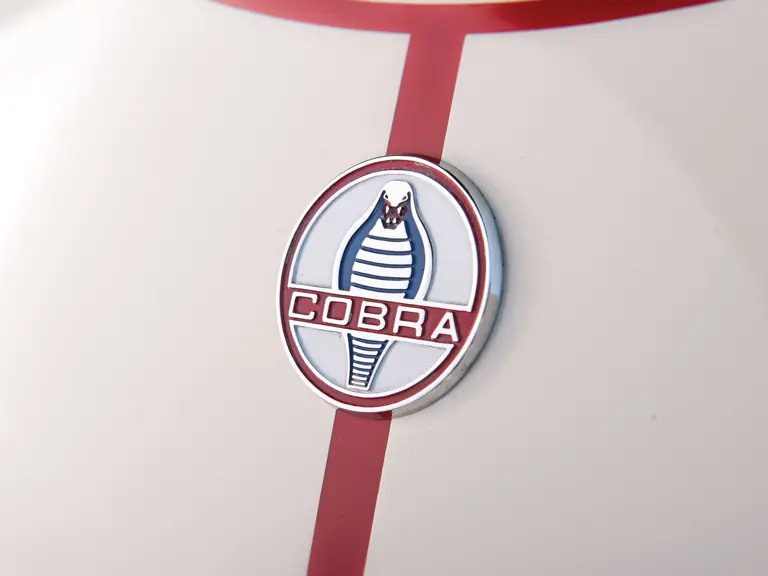
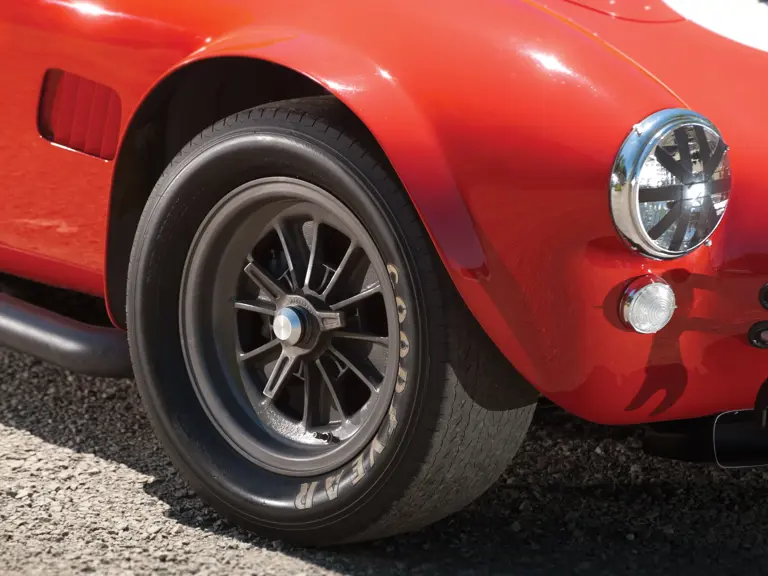
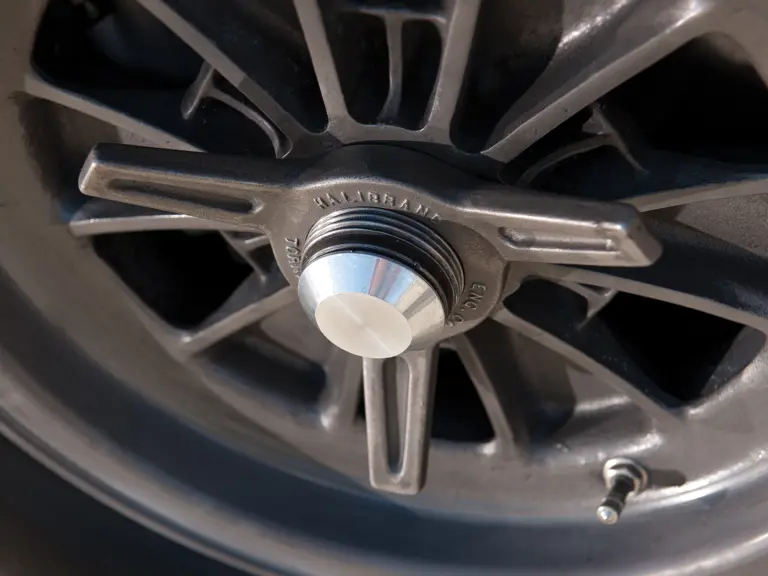


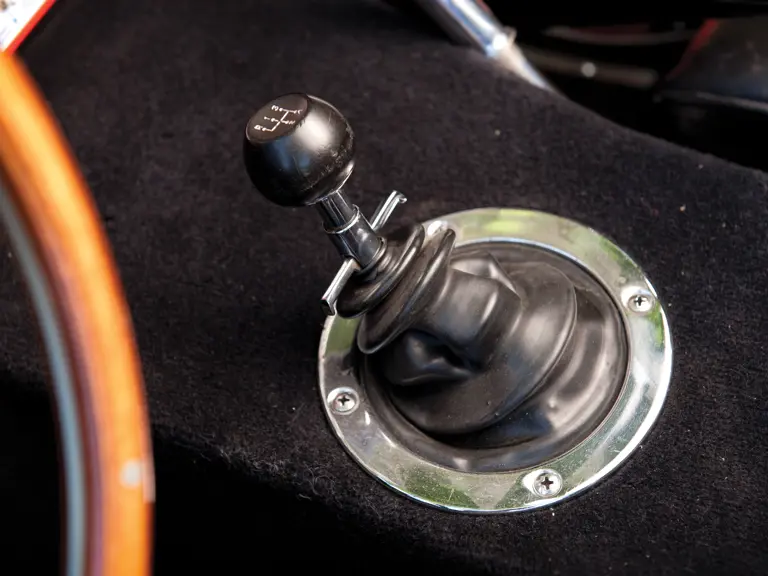

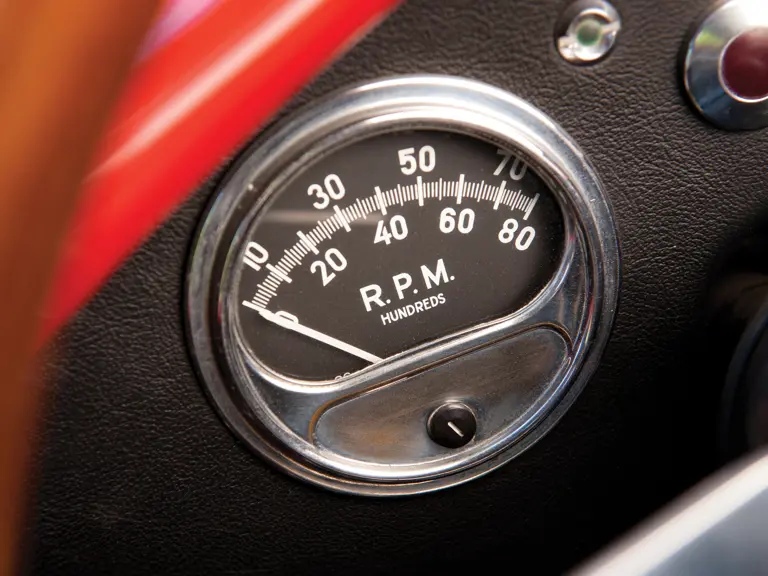
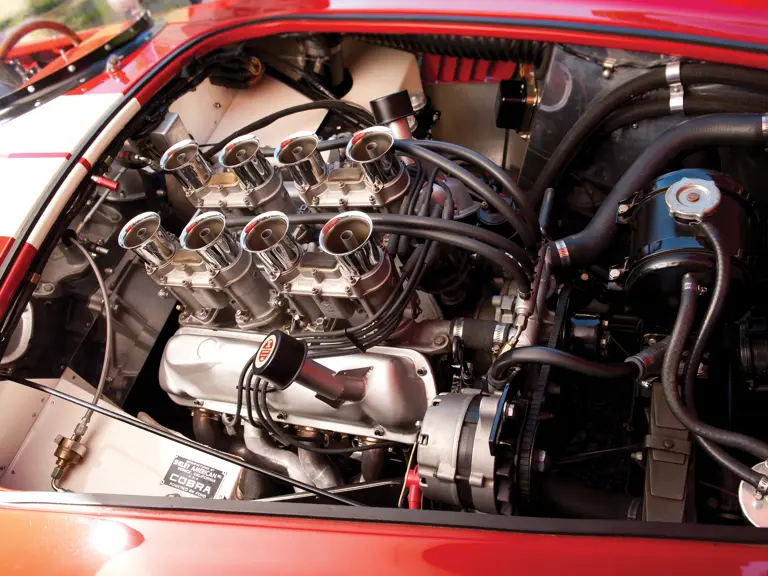
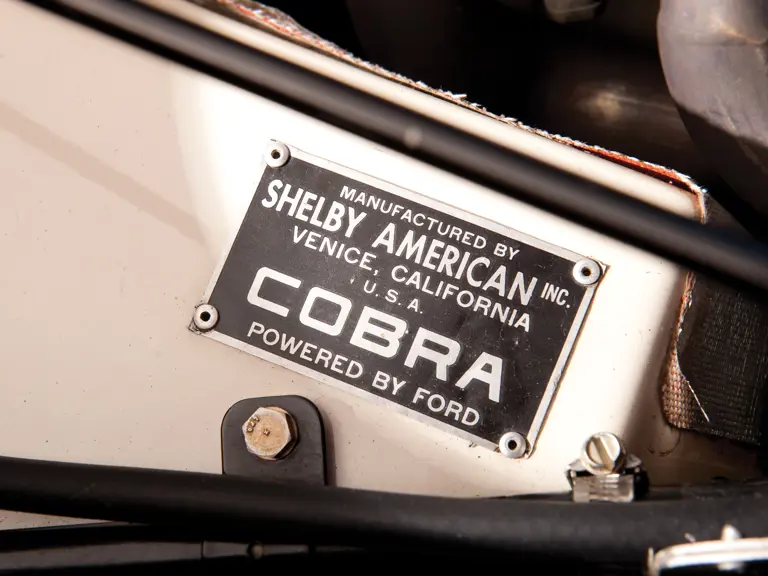
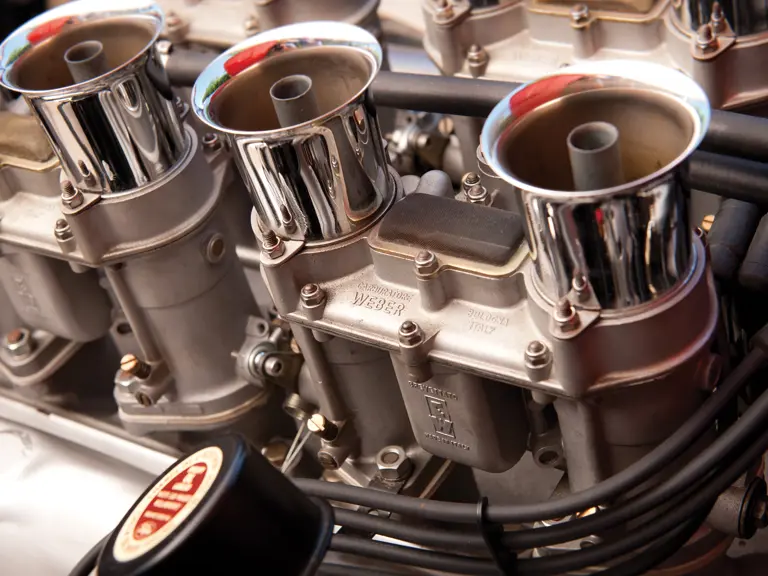
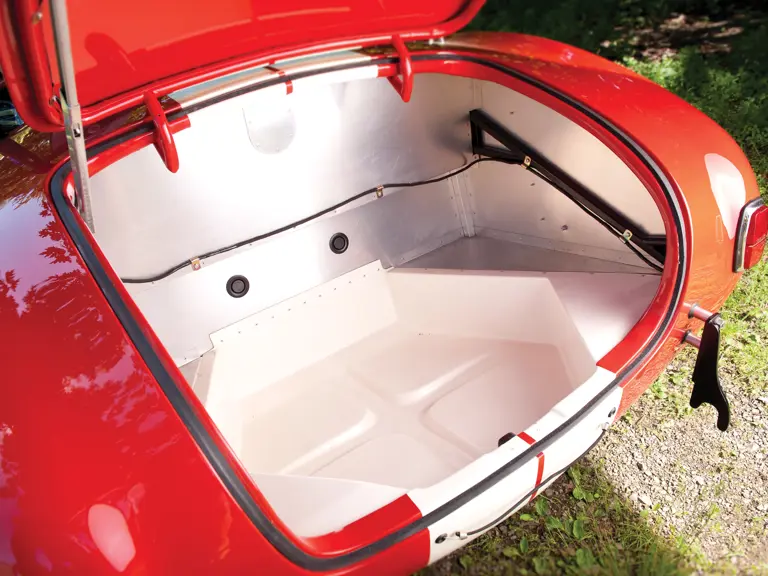


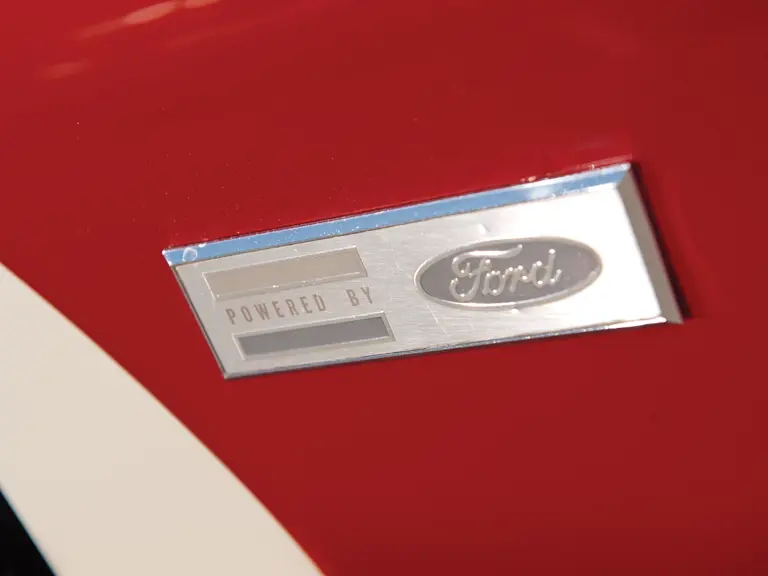

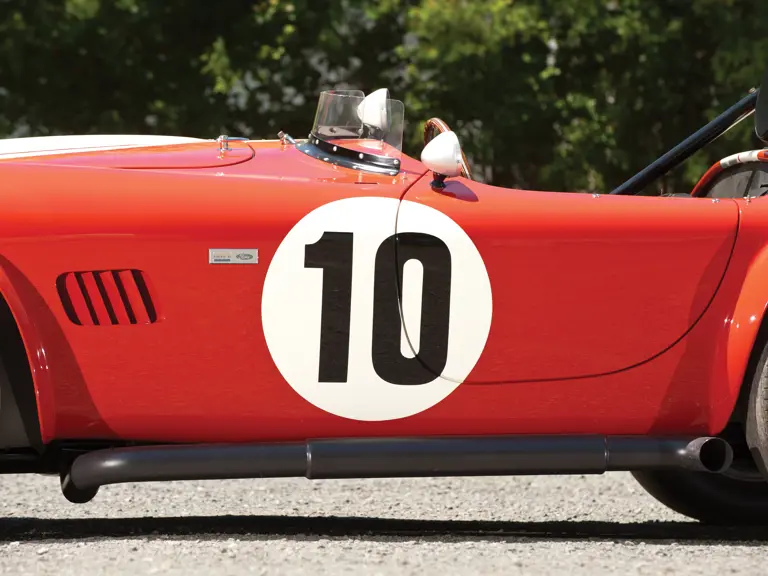
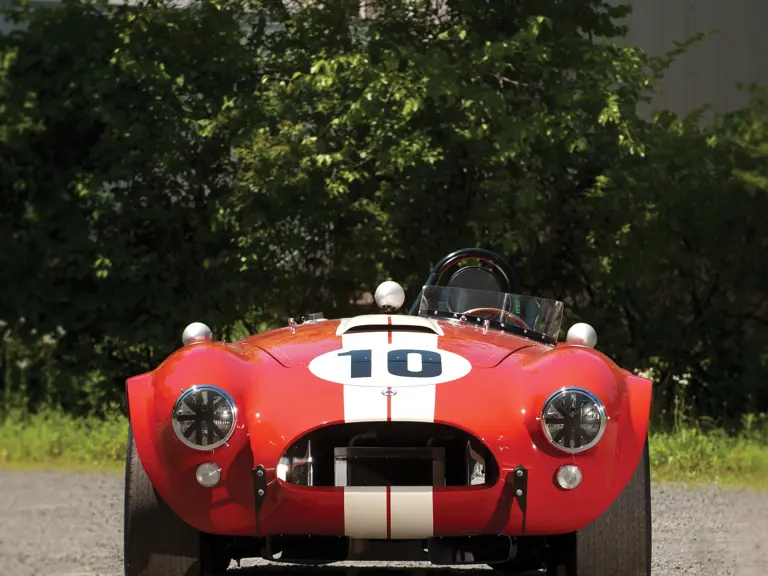
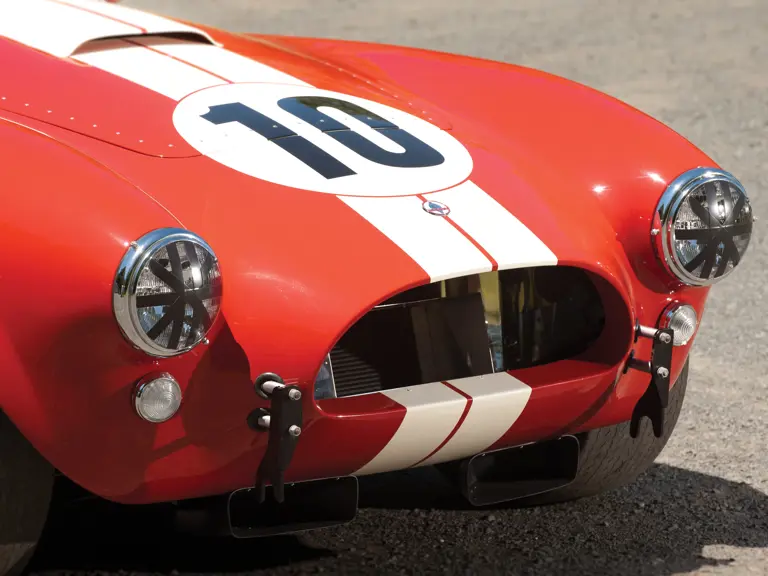
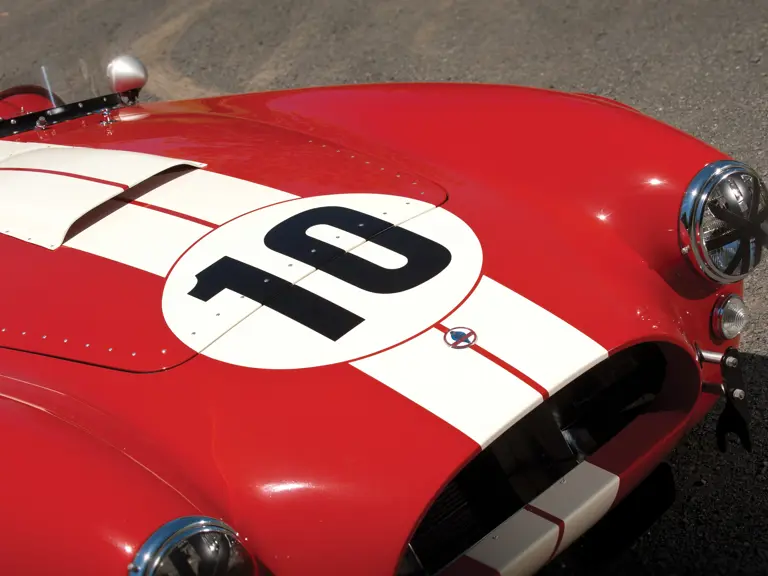




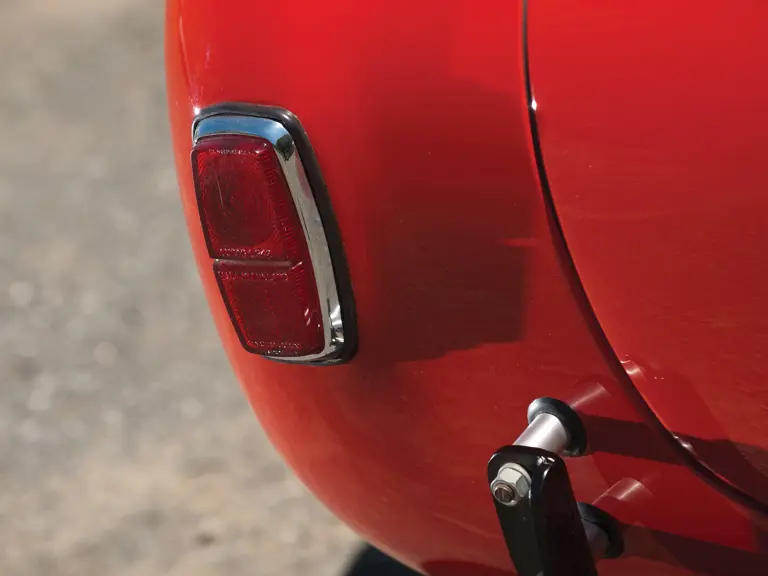
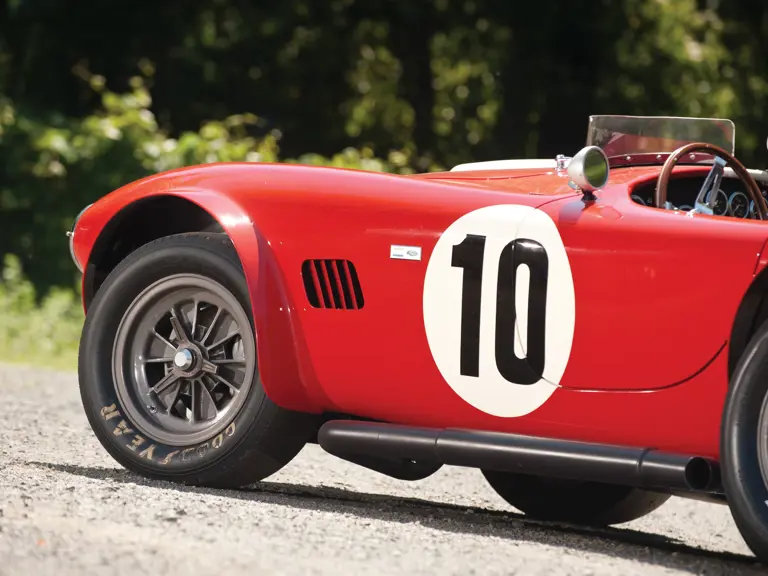
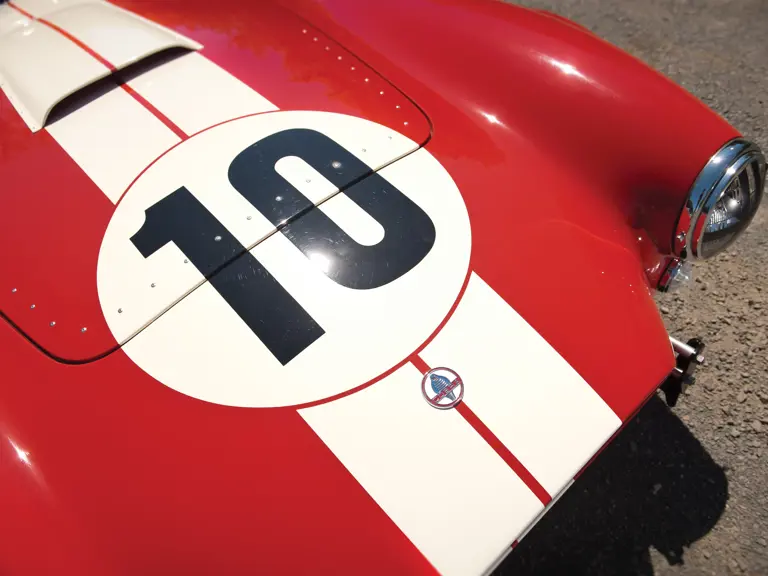
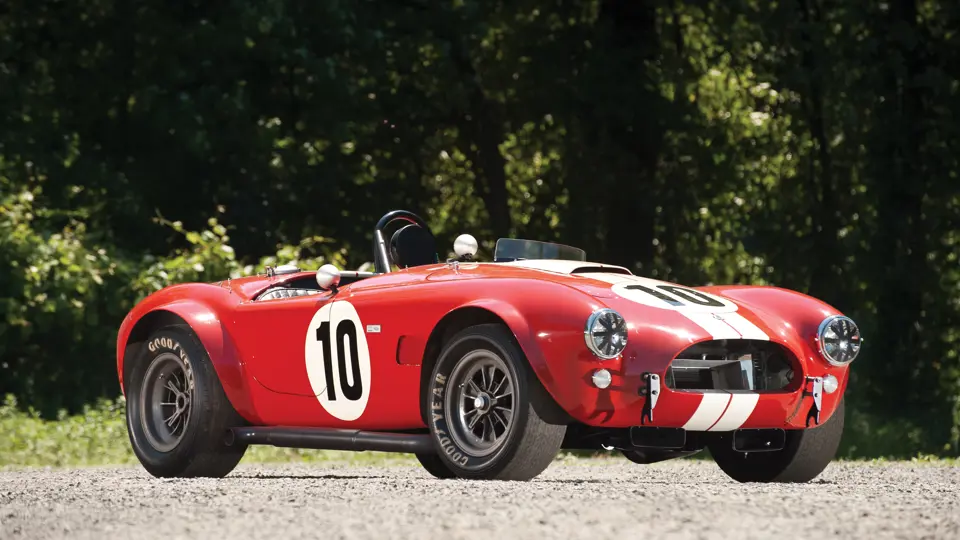
 | Monterey, California
| Monterey, California
